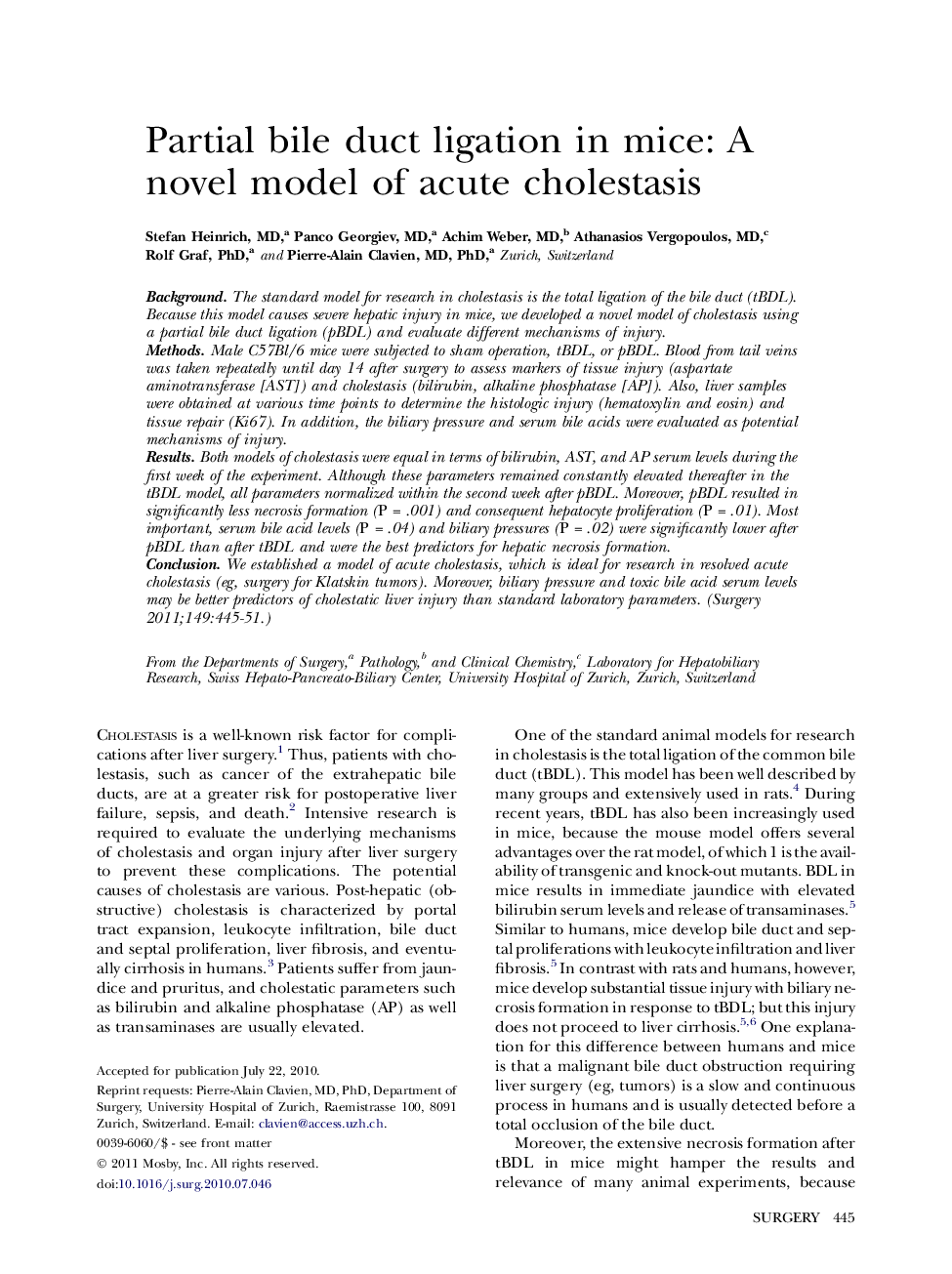| Article ID | Journal | Published Year | Pages | File Type |
|---|---|---|---|---|
| 4308181 | Surgery | 2011 | 7 Pages |
BackgroundThe standard model for research in cholestasis is the total ligation of the bile duct (tBDL). Because this model causes severe hepatic injury in mice, we developed a novel model of cholestasis using a partial bile duct ligation (pBDL) and evaluate different mechanisms of injury.MethodsMale C57Bl/6 mice were subjected to sham operation, tBDL, or pBDL. Blood from tail veins was taken repeatedly until day 14 after surgery to assess markers of tissue injury (aspartate aminotransferase [AST]) and cholestasis (bilirubin, alkaline phosphatase [AP]). Also, liver samples were obtained at various time points to determine the histologic injury (hematoxylin and eosin) and tissue repair (Ki67). In addition, the biliary pressure and serum bile acids were evaluated as potential mechanisms of injury.ResultsBoth models of cholestasis were equal in terms of bilirubin, AST, and AP serum levels during the first week of the experiment. Although these parameters remained constantly elevated thereafter in the tBDL model, all parameters normalized within the second week after pBDL. Moreover, pBDL resulted in significantly less necrosis formation (P = .001) and consequent hepatocyte proliferation (P= .01). Most important, serum bile acid levels (P = .04) and biliary pressures (P = .02) were significantly lower after pBDL than after tBDL and were the best predictors for hepatic necrosis formation.ConclusionWe established a model of acute cholestasis, which is ideal for research in resolved acute cholestasis (eg, surgery for Klatskin tumors). Moreover, biliary pressure and toxic bile acid serum levels may be better predictors of cholestatic liver injury than standard laboratory parameters.
